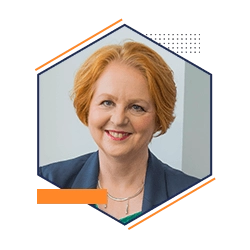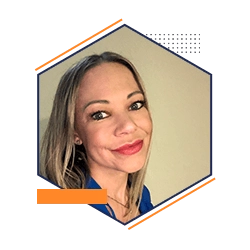
Introduction
It has been a while since B2B distribution was all about cold calling and direct mail, but things have changed significantly since the advent of the digital age.
Over a wide range of industries, companies are increasing their investments in B2B sales teams.
It is no longer just a few years ago when B2B sales involved just a few touchpoints. Today, a lot more stakeholders are engaged, and these factors are creating longer sales cycles, which poses new challenges to all parties who are involved.
Statistics that can help to shape 2021 B2B marketing strategy
- 90% of B2B customers start their journey with a search. To attract top-of-funnel leads, B2B marketers should refine their SEO strategies (Source: Forrester).
- Consumers make 12 searches on average prior to engaging on a specific brand’s site. B2B consumers are highly educated and like to comparison shop for the best possible value (Source: Google).
- 90% of B2B customers research 2-7 sites before they make a purchase. To drive conversions, it’s important to provide B2B consumers with quality content that differentiates your company from its competitors.
- In 2020, 80% of the average B2B buyer journey took place online. B2B buyers will only reach out to an agent once they’ve surveyed the market and done extensive research (Source: Forrester & Gartner).
- As a result of COVID-19, 96% of B2B sales teams have shifted to remote selling. With no in-person meetings, B2B companies need to create optimal digital and phone call experiences for prospects (Source: McKinsey).
- B2B digital ad spend will reach $9.03 billion in 2021. The digital advertising landscape will become more saturated for B2B marketers, increasing cost per lead (Source: eMarketer).
In this article, we’ve got together 2o Top B2B Marketing Experts from across the globe who share their views and insights on “How To Boost B2B Sales Like A Bull”.
Here’s Our Expert Panel
#1 Mike Schultz

Identify your Greatest Impact Activity (GIA) and start each day with it. Your GIA is the one activity that, should you do it consistently at high quality, will get you the greatest eventual return on your time investment. Sales managers can help their team identify their GIAs by developing action plans. With an action plan in place, sellers know exactly what they should be doing and where they should be focusing each day. Put the GIA first in the daily plan to give your team the best chance for success.
Author Bio
Mike Schultz is a bestselling author of “Rainmaking Conversations,” “Insight Selling,” “Virtual Selling: How to Build Relationships, Differentiate, and Win Sales Remotely,” and “Not Today: The 9 Habits of Extreme Productivity.” He is Director of the RAIN Group Center for Sales Research and President of RAIN Group, a Top Sales Training Company that delivers award-winning results through in-person and virtual sales training, coaching, and reinforcement. You can connect with him on LinkedIn.
#2 Dinis Guarda

Boost B2B sales is about focusing on solving a specific problem to a very concrete and measured audience. On our digital economic days, this implies a strong digital Research and a bold profile for your company, organisation or team. This is both on web, mobile, social media and concrete niche B2B networks.
Once you have a tailored capacity and a clear understanding about what you want to sell is only when the sales process can start. This implies a bull persistence of focus. Focus on clear business segmentation. Focus on understanding your target audience and be obsessive about them. Do all research and know everything about their long tail segmentation. Intelligence about your audience and your clients is the number one golden B2B sales rule.
After the work and once you find a clear critical solution and problem solving ways for this very specific ecosystem you will be ready to boost your B2B sales like a bull.
B2B is about people first and their business after. Once on that journey of understanding you B2B segment concentrate all your narrative, your digital outreach whether on web, mobile, app or social media to reach their ecosystem, their influencers and especially the thought leaders and decision makers. This implies precision and scientific data driven preparation.
Once ready, work on serious messaging and content on explaining how your solution solves their problem. Your solution needs to be simple and efficient and needs to solve a concrete problem. Don’t try to solve all their problems. Solve one at the time.
How do you do this? Make sure you have a credible and solid digital presence and outreach tailored to the segmentation. Your digital presence will be the first key to open any door close to your audience. Your digital presence, content, narrative and your sales people are critical.
Repeat and build the messaging, competent and outreach to the ecosystem creating engagement with them. After you get buy-in start sales with a simple to buy and clear call to action similar to a subscribe solution.
Author Bio
Dinis Guarda is an author, academic, influencer, serial entrepreneur and leader in 4IR, AI, Fintech, digital transformation and Blockchain. With over two decades of experience in international business, C level positions and digital transformation, Dinis has worked with new tech, cryptocurrencies, drive ICOs, regulation, compliance, legal international processes, and has created a bank, and been involved in the inception of some of the top 100 digital currencies. You can connect with him on LinkedIn.#3 Braden Kelley

If you’re looking to close more business and feeling stuck, try injecting some human-centric problem solving into your sales process.
The approach helps you investigate the distinctly human elements that go beyond what sales tools can tell you about a prospect. It can also help you discover the true problem worth solving for the prospect.
People like it when you consider their personal challenges first. It makes them feel heard, not pushed towards a sale. Taking a more human-centric sales approach helps salespeople build a shared experience that develops trust, strengthens relationships, and delivers real value for prospects. All of that can lead to longer relationships and bigger deal-sizes.
Author Bio
Braden Kelley is an experienced innovation speaker, trainer, and digital transformation specialist. He is the author of Charting Change and of Stoking Your Innovation Bonfire, the creator of the Human-Centered Change™ methodology, and built and soldInnovationExcellence.com. He writes and speaks frequently on the topics of continuous innovation, digital transformation, and organizational change. You can connect with him on LinkedIn.
#4 Mike Kunkle

If we want to “boost sales like a bull” we first need to “stop tossing the bull” at our buyers and customers.
At a time when B2B buyers are speaking clearly about what they want from selling organizations versus what they feel they get, way too much marketing and selling today is all about us. One-size-fits-all value props, incessant pitching, listing off features and benefits, logo walls in decks or on sites, pushing for spaghetti-toss product demos way too early, and more. We can do better.
It’s time we made a full shift to buyer-centric marketing and selling. This simply means to see things from your buyers’ and customers’ point of view and operate in their best interest. You’ll get what you want as you help them get what they want.
Become a magnet that draws them to you. Talk about their roles, their challenges, the opportunities they have, the problems they can avoid, the risks they can mitigate, and impacts they can reduce, and the desired future state outcomes they can achieve. (We teach a model called COIN-OP: Challenges, Opportunities, Impacts, Needs, Outcomes, Priorities.)
Start by deepening this buyer acumen by capturing roles, goals, metrics, and COIN-OP for each buyer persona you work with. Detail their buying process and work to understand the buying process exit criteria for each persona, in each stage of their process. What does each person need to see, hear, feel, understand and believe, in each stage, to feel comfortable moving to the next stage, with you? This works for marketing AND sales, because the role-based problem/outcome-based marketing creates interest early, draws the right buyers to you, and helps you get conversations going. Then, the buyer acumen and exit criteria you’ve documented is the foundation for your content and sales collateral plan, to support the decision process, making things easier for both the buyers and your sellers.
Starting from the buyers’ perspective is a foundation that should influence everything you do. And yes, done well, it will also fuel growth like a runaway bull.
Author Bio
Mike Kunkle is a respected sales transformation architect and an internationally-recognized expert on sales training, sales effectiveness, and sales enablement. He’s spent 36 years in the sales profession and 26 years as a corporate leader or consultant, helping companies drive dramatic revenue growth. Today, Mike is the VP of Sales Effectiveness Services for SPARXiQ, where he advises clients, publishes thought leadership, speaks at conferences, leads webinars, develops sales training courses, delivers workshops, and designs and implements sales enablement systems that get results. He collaborated with co-author Doug Wyatt to develop SPARXiQ’s Modern Sales Foundations™ curriculum and also authored SPARXiQ’s Sales Coaching Excellence™ course. His book on The Building Blocks of Sales Enablement is available on Amazon. You can connect with him on LinkedIn.
#5 Heverton Anunciacao

Bulls are gregarious animals – that is, they live in groups – and this seems to be so important that isolated individuals in the herd become stressed.
However, differentiated bulls should not be tied to just one group and territory: go after new groups and territories! Discover and create new relationships in current or new networking groups.
And to reduce stress, the sales team or sales management should imagine themselves to be that bull version 2.0. That is, use the best data tools and strategies to find the “blind spots” that no other bull could see.
It is not because the current “grass” or “leads” are satisfying you that bull behavior that you should stop creating new networks every day.
The market or customers are never looking for “bulls”, but solutions to their business problems.
For example, the traditional bull’s sense of smell is so finely tuned that they can sniff out odors up to five miles away.
To excel now in lead capture and the efficient use of data, today’s bull has to turn into elephants.
This is because elephants have the best sense of smell in the animal world. Elephants can smell water over a distance of 19 km.
Therefore, the Bull 2.0 must use empathy, data, keen hearing to hear what the network is saying and needing to find his ideal crop and not be dependent only on miracles of time.
Author Bio
Heverton Considered the #1 influencer in the world in CRM and Customer Experience by the Thinkers360 network and voted as Global Gurus for customer service in 2021. He was a jury member of the ABT and CMS customer to elect the customer´s service in Brazil. He is one of the leading authors, consultants, speakers, and writers in the world in CRM, CX, and Data Science. You can connect with him on LinkedIn.
#6 Gill Walker

Get your CRM solution working for you – not against you.
Once this is achieved, you can kiss goodbye to repetitive work, be reminded when calls are due, see simply how previous conversations have gone, check orders, know all products that a customer has purchased, review their payment history, understand the issues that they have raised to your support team and more.
All of these should be controlled by a permissions model, so people only access what they need, and should have and have an interface that makes access to information important to them easy.
And of course, if any powerful tool is going to share all of its power with you, you have to be trained in how to release the power.
In summary – get your CRM working for you, by doing the repetitive work, giving you the information that you need when you need it. This is easier than many sales people think.
Author Bio
Gill Walker is known as “Your CRM Success Catalyst”. She is a speaker, trainer, advisor and consultant with nearly two decades of experience getting more value out of Microsoft Dynamics 365 and Microsoft CRM. Prior to that, she worked with other CRM technologies. You can connect with her on LinkedIn.
#7 Donald Kelly

The best way to boost your B2B sales are through two ways in my opinion: 1. Using LinkedIn to make genuine connections. This is not about “pitching” but meeting people and learning about them. 2. Another way is to reach out and let them know how you solve problems they are facing. Too many sellers are focused on waiting for customers to come to them rather than ACTIVELY reaching out. This is not just via a “phone call”, but by using video, email, phone, social media, snail mail and text to stand out from the pack. When done properly with a message, focused on solving problems for customers, you will be on track to sales success.
Author Bio
Donald C. Kelly. You can connect with him on LinkedIn.
#8 Tabitha Jean Naylor

Generating high-quality B2B leads positively impacts your sales. The sales and decision-making processes of B2B customers tend to be longer than those of B2C. Lead generation strategies to ensure there’s always sales potential in the pipeline
Use Multiple Lead-Generation Channels
Capitalize on the strengths of various lead generation channels. Each channel will lead to your business, customers who are at different stages of the B2B decision-making process.
LinkedIn, the new kid on the social selling block, generates high-quality leads who are already interested or looking for your service. Additionally, you can narrow your knowledge of these prospects down to their workplace and role. That said, LinkedIn communications can be quite stilted because of this overt business-oriented framework.
Other social platforms, such as Twitter, personalize B2B lead generation. The more laid-back environment allows you to discover personal things about your
Apart from digital channels, traditional channels like networking events, trade shows and, outbound initiatives connect you with a different caliber of leads and increase sales.
Free Tools Help to Generate Leads
What free tool or trial can you offer your prospective clients?
Consider your offering and then pare it down to the minimum value proposition. It has to be a good representation of what the customer would get upon purchasing your service.
For example, HubSpot has free features on almost all the tools on its CRM platform. The premium versions have better features.
A free tool is the perfect lead generation tool for tech and SaaS suppliers because it:
● Gives your lead a chance to try the product before they pay
● Attracts your high-quality leads into your sales funnel by offering them a strong reason to opt in.
Author Bio
Tabitha Jean Naylor is the founder of Women Entrepreneurs Can – a digital magazine designed specifically for women entrepreneurs, startup founders and small business owners – and the proud owner of TabithaNaylor.com, a marketing firm that delivers ‘big agency’ quality at rates that are affordable for startups and small businesses. You can connect with her on LinkedIn.
#9 Jeff Swan

In B2B sales, outbound is a vital channel for opening doors and establishing a market. Unfortunately, too many outbound reps focus on themselves, their company, and solution, leaving prospects annoyed at the interruption.
Instead of making it about you, focus on getting to know your customer – what they’re trying to achieve, what’s holding them back, and what they’re currently investing in to overcome their roadblocks that’s just not working. Then deliver insights that will help your customer achieve their goals faster while establishing yourself as a valuable/credible resource.
Making it all about your customer removes defenses & inspires prospects to ASK for the sales meeting rather than have you chase them down for standard, knee-jerk objections.
Author Bio
As co-head of RevLeague Outbound Sales community & co-creator of The Alfred Method™ multi-channel, multi-touch prospecting framework, Jeff is passionate about turning SDRs, AEs, and sales-focused Founders into prospecting rockstars through training, coaching, and educational content. You can connect with him on LinkedIn.
#10 Jason Hennessey

Manage the expectations of your client, underpromise then over deliver, provide a great service, turn your work into a case study, then leverage the case study to help market and promote your work to new prospects.
Author Bio
Jason Hennessey is an internationally-recognized SEO expert and thought leader, author, and business executive whose ethos of “educate and empower” has earned him a reputation for excellence in search marketing since 2001. A serial entrepreneur, Jason has founded and sold multiple successful businesses, and has grown Hennessey Digital from a small consulting firm into a $10MM+ business with over 120 global employees. You can connect with him on LinkedIn.
#11 Brynne Tillman

Leverage LinkedIn for client referrals. Search your client’s connections and build a list of targeted prospects, then run the names by your client to get insights. Often these conversations lead to introductions and/or permission to name drop.
Author Bio
Brynne Tillman is the CEO of Social Sales Link and Author of the LinkedIn Sales Playbook. Brynne and her team help sales professionals master LinkedIn to start more conversations on a consistent basis. You can connect with her on LinkedIn.
#12 Steph Hermanson

Boosting your sales like a bull immediately makes me think of the Mythbusters episode years ago where they showed that a bull set loose in a china shop is actually quite graceful. They are swift, fast, and effective at navigating their way through even the most delicate situations.
To boost your sales like a bull, you need to know your surroundings. Knowledge! Know your audience, your product, and the reasons why your audience and your product go together. Know how to read the room and react accordingly. Allow your prospect to speak and have the knowledge to back up what you say next. Don’t force features and demos on people that don’t match what they’re actually saying to you – with or without words.
To boost sales like a bull – you have to have data!
Author Bio
Steph Hermanson is the Chief Revenue Officer (CRO) and one of the owners of Atomic Revenue. She develops and implements revenue operations strategies for companies all over the United States along with managing a coast-to-coast team of contractors and employees. As Atomic’s EOS® Integrator, she is skilled in the art of getting all departments to work toward the same goals to sustain predictable and profitable revenue streams for Atomic Revenue and our clients. Steph is also a nationally known, dynamic speaker. You can connect with her on LinkedIn.
#13 Steven Benson

Know your customers and adapt to the circumstances.
Author Bio
Left a 30 year career to start my own business in 2008. Owner of a promotional marketing company with concentration of customers in the automotive and healthcare industries. You can connect with him on LinkedIn.
#14 Shahin Hoda

Strategically introduce humour into your B2B campaigns. The CIO of that large telco you’re targeting also watches Netflix in the evening. At the end of the day you’re targeting people and they will not forget when you make them smile.
Author Bio
Shahin is the Founder of xGrowth, a B2B growth agency helping organisations close more mid-market and large enterprise deals. He’s making that happen by popularising Account-Based Marketing (ABM) in Australia, working alongside B2B leaders implementing ABM strategies and building predictable revenue engines. You can connect with him on LinkedIn.
#15 Dan Gingiss

Stop constantly saddling your sales teams with unreasonably increasing sales goals every year, and start paying attention to your “leaky bucket.”
Almost every business has a leaky bucket. Most companies are focused on sales growth and bringing in new customers at the expense of the existing customers who are funding the business. Without our existing customers, we’re out of business. So why do companies spend so much money and time focused on higher and higher sales and new customer goals yet not nearly as much time with the customers they already have?
Retaining an existing customer is easier and cheaper than acquiring a new one, but the net effect is the same.
Author Bio
Dan Gingiss is an international keynote speaker and coach who believes that a remarkable customer experience is your best sales and marketing strategy. His 20-year professional career included leadership positions at McDonald’s, Discover and Humana. You can connect with him on LinkedIn.
#16 John Livesay

The Sale is in the Tale
Author Bio
John Livesay is known as The Pitch Whisperer and works with B to B sales teams to turn case studies into case stories to win new business. You can contact him on LinkedIn.
#17 Mario Martinez Jr.

Prospecting to generate sales leads is one of the most important jobs of the modern sales professional. In fact, if you ask any sales leader what their teams struggle with the most (and I have), they would say it’s prospecting, especially now that virtual selling is the norm.
Actually, in April 2021, the percentage of sellers who said prospecting is the hardest part of the sales cycle increased to 68.5 %.
So, why is prospecting the most challenging part of the sales process? Here are a few reasons:
●Your potential customer is incredibly busy and distracted — there is such an overload of information out there that their brains automatically filter out any kind of sales pitch (unless they are actively shopping for your solution).
●Most sales messaging today sounds the same (just look at your inbox or InMail), as sellers are using the same lines and tricks as everybody else.
●The sheer amount of competition is mind-numbing and buyers have so many options to choose from that your solution may now be considered a commodity.
How can sales reps stand out from the crowd and start building their sales pipeline? You need prospecting techniques that will actually work with the modern buyer. It’s called the omni-channel. Modern sellers must develop social selling skills and learn how to use video for sales.
Author Bio
Mario is the CEO and Co-founder of Vengreso. He spent 87 consecutive quarters in B2B Sales and Leadership roles growing hundreds of millions of dollars in revenue annually. You can connect with him on LinkedIn.
Understand the buyer, understand the sale. Buyer trends are about what and why people are buying, not industry ups and downs.
Author Bio
Highlights: • C-level sales leader and highly sought after industry thought leader, quoted by Forbes, Inc. and Huff Post. • First VP of Sales at Glassdoor (1.2 billion dollar acquisition – May 2018) • VP of Sales at NoWait (acquired by Yelp – March 2017). You can connect with her on LinkedIn.
#19 Ian Altman

There are traps that prevent B2B companies from achieving success. One hidden trap is the company’s focus on what you are selling. Instead, get on the Same Side as your client and shift your focus to what problem they are trying to solve using what you sell.
Another overlooked trap is the lack of practice. Top athletes and musicians spend more time practicing than actually performing their craft. However, many sales professionals make excuses for why they don’t need to practice. Top performing sellers practice regularly to hone their skills and be prepared for any situation. If you don’t practice, then you are resigning yourself to the fact that you prefer to make mistakes when it counts vs. in practice with colleagues where you can make adjustments without consequences.
Author Bio
Ian Altman is the bestselling co-author of Same Side Selling and founder of the SameSideSellingAcademy.com, rated one of the top 5 Sales Development Programs globally. Ian started, sold, and grew his prior companies from zero to over one billion dollars in value. He is perennially recognized as one of the world’s top 30 Experts on Sales and is a frequent keynote speaker and advisor to B2B companies on proven approaches for explosive growth. You can connect with him on LinkedIn .
#20 Phil Sayers

B2B selling has changed dramatically over the last 10 years and the old approach of mass cold calling and pitching your products is nowhere near as effective as it used to be. Customers typically extensively research potential solutions before they’re prepared to reach out or take calls, so making yourself visible through social media is crucial, but that doesn’t mean posting a
stream of sales pitches. The key is to showcase your true commercial value by explaining how you help your customers solve the problems they may be facing and describing the impact of solving these problems in the broadest possible terms. Posting regularly keeps you visible and will start to position you as an expert in your particular field. Keep an eye out for your target customers’ posts and announcements and then use these as the route to commenting and making contact.
Author Bio
Phil is the founder of Proten Sales Development (www.protensd.co.uk). Phil has been selling for more years than he cares to remember and now uses those years of experience to help B2B businesses sell more, sell often and build a better business. You can connect with him on LinkedIn.
Our blog
Latest blog posts
Tool and strategies modern teams need to help their companies grow.

Beat your competitors and exceed your revenue goals this year by shifting your focus ...

SaaS growth has never been more challenging. SaaS companies must move faster and smar...

In the absence of a solid lead scoring system, your sales team will spend time pursui...




